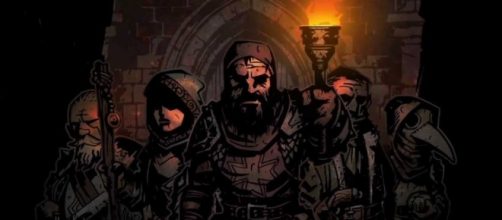Darkest Dungeon is a tactical turn-based RPG Horror game by Red Hook studios in which the player must assemble teams of explorers to venture through and reclaim parts of their Ancestors estate that have been overcome by an ancient Lovecraftian curse.
This game is praised for its immersion and realism when dealing with the human psyche and uses Ludonarrative Dissonance in order to achieve this, exploring cramped mazes is made that much more chilling when the player's humanity is called into question and the small rotating band of adventures you host feel that much more real.
What is Ludonarrative Dissonance?
Ludonarrative Dissonance refers to the conflict between a game's narrative and its gameplay, whether it fits together or expresses opposing ideologies.
For example having a narrative which paints a character as a pacifist only to have the gameplay encourage violence.
An example of this would be in the Assassins Creed franchise where the player is given innumerable weapons and abilities charged for murder but is encouraged not to use them by the game's narrative.
Alternatively, Darkest Dungeon uses this Gameplay narrative disconnect in order send a deeper message to the player that would otherwise not be realized.
Another franchise that uses Ludonarrative dissonance is the Bioshock Franchise
How Darkest Dungeon changes our understanding of Ludonarrative Dissonance
Darkest Dungeon's opening narrated by the players long lost mad ancestor addresses the player directly, referring to them as “the last of our noble line” and describing the horrors that have befallen your once grand estate giving you the mission of reclaiming it yourself.
The player is directly addressed and made a character themselves instead of becoming another unknown character as is common in most modern games. This immediately immerses them in the Narrative and invites them to construct their own narrative from that point.
Immersion is a key factor in accepting Ludonarrative Dissonance as it prevents the player from developing an element of disbelief; it’s what often separates arcade games like Super Mario from the narrative-driven games of today.
Players create their own story
When the player begins they are lead to believe they are the hero of the story and will be the one to lead a band of heroic adventurers to save your ancestors estate and consequently the world from the clutches of evil, however this game uses Dissonance (The disconnect between narrative and gameplay) to force players to create their own stories that are counter to what is presented to them.
The difficulty forces the player to become almost sociopathic in their strategy often forcing adventurer after adventurer into the depths to die deliberately in endless waves, it is only when the player refers to the Narrative that they are met with the counter-narrative of a crazed ruler committing endless selfish atrocities.
Not only that but the sanity system makes some of your best adventurers morally questionable, soon the Narrative evolves into the story of a tyrannical leader leading a group of drunkards and sexual deviants to combat another evil.
Darkest Dungeon by Red Hook studios proves that ludonarrative dissonance can be used positively and effectively as an almost self examinatory plot twist, while it is primarily used in Ludonarrative Horror it could also be used in other forms of media to construct a complex plot and further the narrative value of the product.
Furthermore, the use of immersive storytelling to further gameplay is a concept rarely put to good use but proves highly effective and should be considered for use more in modern game design.


